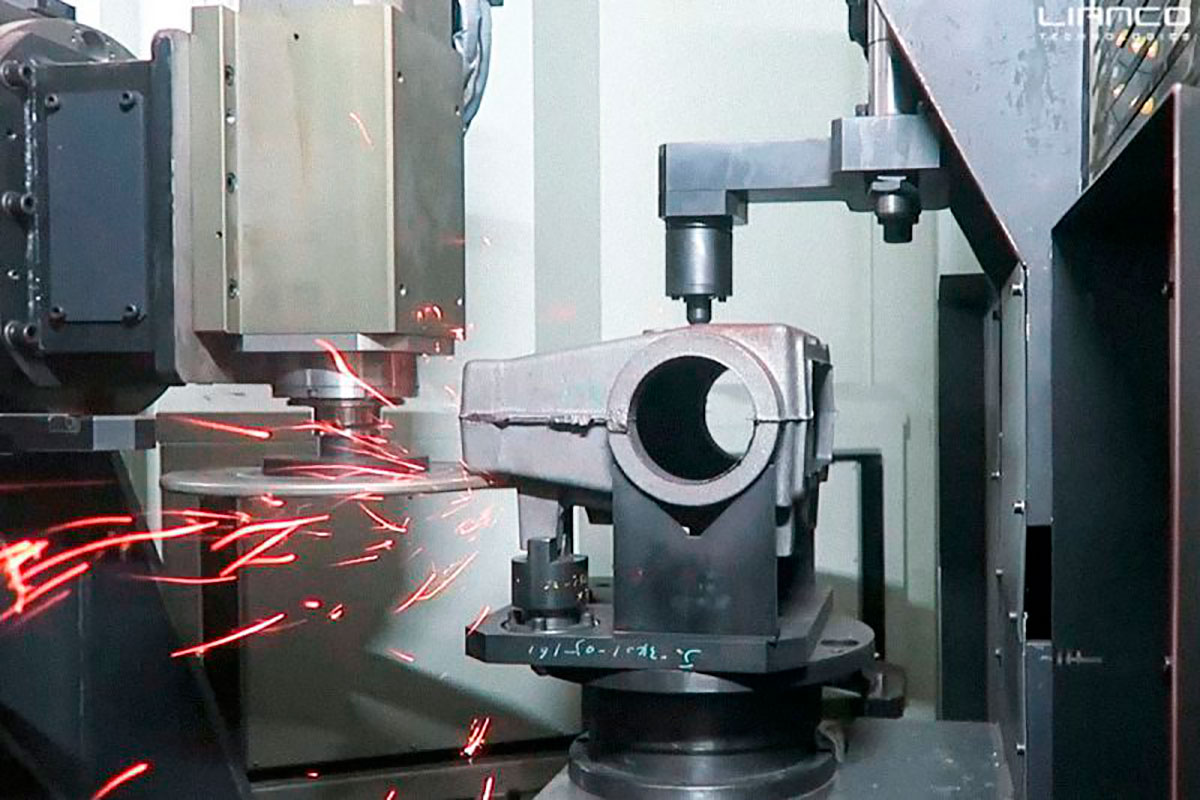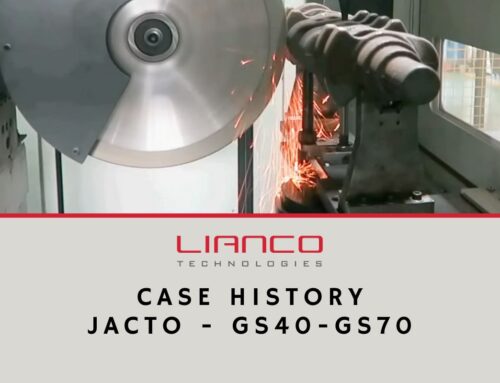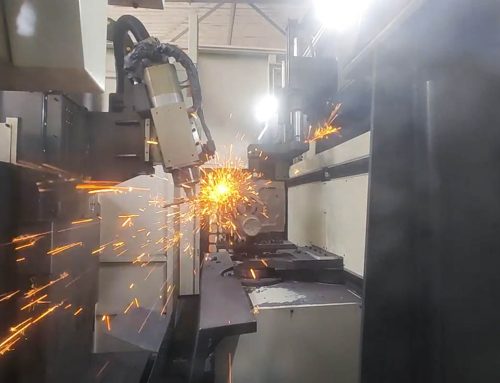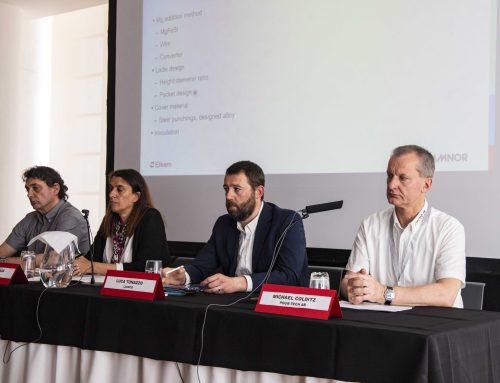CNC or robot? Why not both in a single solution?
In our previous article we discussed whether it would be better to use CNC or robot for automatic grinding purpose and the plus of each solution, today we want to explore more the topic and see if there is a good alternative to those two options.
As industry development has shown in many sectors the best comes out from the combination of the plus each solution can offer.
CNC and robot combined for the foundry.
CNC are unbeatable per their rigidity and working speed, robots are the best in terms of flexibility, so the spontaneous question one may have is why can’t you combine the two together?
Indeed after decades where a huge wall always divided the CNC (or PLC) controlled heavy duty machineries, used mainly for outside part grinding (snag grinding, face grinding and so on) from the robotic based solutions applied to mainly light alloys finishing (deburring, polishing and similar cases) in the last years the market has started seen solutions that tried to combine the plus of both technologies.
If you have a chance to visit foundry finishing shops around the world, especially in the automotive sector, you may happen to see solutions where CNC units are working along with robotic arms in a single complex, quite fascinating ideas.
Unfortunately, not an easy call for a job shop as they require high level of skills to be properly used.
Just consider the programmer who oversees a new part set up that needs to know both the cnc as well as the robotic programming languages.
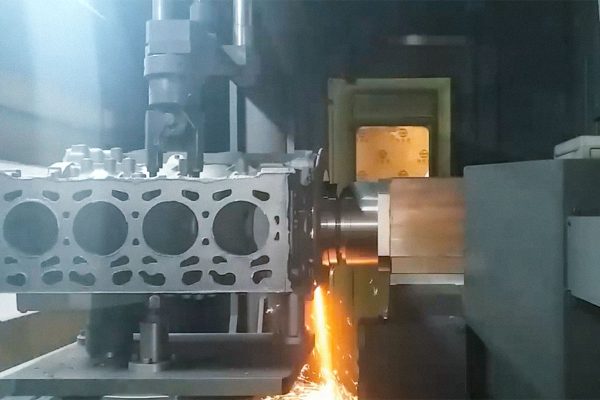
A single machine able to combine rigidity and flexibility now exists!
Much better would be to have a single machine capable of combining strength and flexibility in the same set up, simplifying management and programming.
Here again the machine tool world comes to help as the same evolution the machine tools industry have seen starting 50 years ago (going from simple 3 axis machining to 5 axis machining) is now happening in the automatic grinding arena.
With proud we can state finally foundries can find in the market what they have been looking for since ever:
- A machining center, built with linear axis mounted on sturdy LM guides, driven by ball screws, combined with a continuous rotary table and tilting head that offers 5 degrees of freedom with unmatched rigidity.
- The addition of a high-performance electro spindle with a diamond wheel and automatic tool change function gives all users the right tool to finish their castings as much as possible, as fast as possible.
- Last but not least being a CNC based technology, the unit can be programmed offline by adopting all known CAD/CAM software widely used in the manufacturing industry.
With such technology the mental wall separating the foundry from the machine shop starts falling down, letting foundries show they deserve to be seen as a highly automated shop, capable of offering to the next step of the supply chain (either their own machine shop or the customer’s one) good quality castings, properly cleaned and sometimes even pre machined if required.
We are very proud to be part of this change, if you are too, please keep following us!





